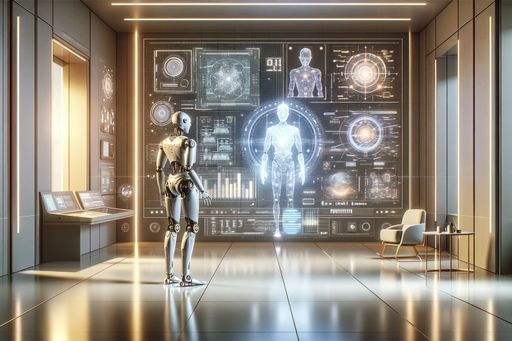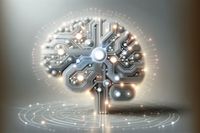Early Mickey Mouse Enters the Public Domain and AI Takes Advantage
An AI image generator trained on Disney's 1928 cartoons can create new and unusual images of Mickey Mouse.

AI Experimenters Use Public Domain Mickey Mouse in Image Generator
Three early Mickey Mouse cartoons entered the public domain in the US on January 1, and AI experimenters wasted no time in taking advantage of it. A digital humanities researcher named Pierre-Carl Langlais uploaded an AI model to Hugging Face that has been trained on these public domain cartoons. The model can generate new still images based on a written prompt. Although the results are sometimes rough and garbled, they show early experimentation with integrating public domain Mickey into the AI space.
The AI model can create images of Mickey Mouse, Minnie Mouse, and Peg Leg Pete that adhere to the 1928 design and remain in the public domain. The model is still a work in progress and Langlais advises checking the generated images to ensure they truly adhere to the public domain design. However, Langlais also notes that the training stills used for the model are not of the highest quality and that higher definition versions may become available as the cartoons enter the public domain.
The model was created by fine-tuning Stable Diffusion XL with stills from three 1928 Mickey Mouse cartoons: Steamboat Willie, Plane Crazy, and The Gallopin' Gaucho. These cartoons were selected due to their public domain status. Langlais explains that the limited number of stills used for training was for practical purposes, as more stills would have increased costs and training time. However, Langlais hopes that higher quality versions of the training stills will be available now that the cartoons are in the public domain.
AI Generated Images of Mickey Mouse Create Social Media Buzz
Once the news of the AI image generator based on the public domain Mickey Mouse cartoons spread on social media, users quickly began experimenting with creating humorous and unconventional images. These images included depictions of Mickey Mouse smoking crack, attacking the US Capitol, and becoming an eldritch horror. The Stable Diffusion XL base model used for the AI generator was responsible for introducing concepts not found in the original 1928 cartoons.
While it is possible to create AI-generated images of Mickey Mouse without the use of this model, the novelty lies in the fact that the 1928 Mickey Mouse imagery can now be used legally and freely as AI training data. This opens up possibilities for using these early versions of Mickey in AI-generated content.
It's important to note that the use of Stable Diffusion XL in this context does not make the images 100% legal, as the base model still incorporates copyrighted works in its training data. However, the legality of using copyrighted training data for AI has not been fully resolved. Additionally, AI-generated images technically fall into the public domain in the US and cannot be copyrighted. However, certain depictions of copyright-protected designs or characters used without permission may not be fully public domain.
Implications of Mickey Mouse Entering the Public Domain
The entry of the three 1928 Mickey Mouse cartoons into the public domain has sparked discussions and speculation about the implications for copyright and trademark issues. While the public domain admission covers only the early versions of Mickey Mouse and not later versions, it presents opportunities for experimentation and creative use of the character's imagery.
The exact legal status of using AI models trained on copyrighted works remains complex and unresolved. Efforts are underway to train AI models on open culture sources to enforce better standards of reproducibility and data provenance. However, the copyright extension terms have made it challenging to find a straightforward solution to the AI copyright problem.
Going forward, it is likely that the legal and trademark implications of using early Mickey Mouse imagery will be thoroughly tested as people continue to explore the possibilities offered by the public domain status of these cartoons.



